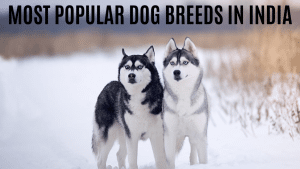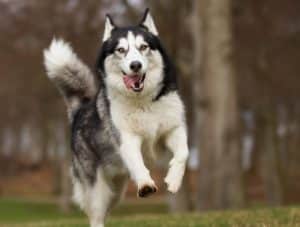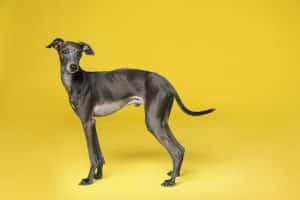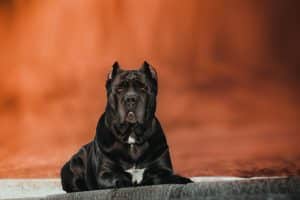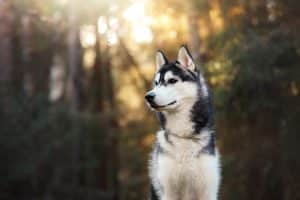Understanding and Treating Dog Dandruff
Dandruff, those bothersome white flakes, can affect our canine companions too! Here’s what you need to know about the causes, treatments, and prevention of dog dandruff.
Causes of Dog Dandruff
- Dry Skin: Common in winter or due to excessive bathing, stripping natural oils.
- Allergies: Sensitivity to food, pollen, or other environmental factors.
- Parasites: Mites or fleas can cause irritation and flaking.
- Infections: Bacterial or fungal overgrowth on the skin.
- Nutritional Deficiencies: A well-balanced diet is crucial for skin health.
- Underlying Health Conditions: Dandruff can sometimes indicate systemic problems.
Signs of Dog Dandruff
- White flakes on the fur and where your dog rests.
- Itching, scratching, or biting at the skin.
- Redness or inflammation.
- Hair loss in severe cases.
- Unpleasant odor.
When to See a Vet
Consult your vet if your dog shows:
- Excessive dandruff
- Severe itching
- Skin irritation
- Hair loss
- Odor
How to Get Rid of Dog Dandruff
- Regular Grooming: Brushing removes dead skin and distributes healthy oils.
- Special Shampoos: Anti-dandruff shampoos formulated for dogs can be helpful (avoid human shampoos!).
- Oatmeal Baths: A soothing, natural remedy.
- Balanced Diet: Provide quality food to support skin health.
- Humidifier: Combat dryness, especially during winter.
- Supplements: Omega-3 and Omega-6 fatty acids can improve skin and coat condition (consult your vet for recommendations).
Vet Advice
Your veterinarian can diagnose the underlying cause of your dog’s dandruff and recommend the best treatment plan. This may include medication for infections, allergy management, or addressing other health issues.
Key Takeaways
- Dog dandruff is common but often manageable.
- Address the root cause for long-term success.
- Maintain a healthy grooming routine and balanced diet.
- Seek veterinary advice for persistent dandruff or severe symptoms.
Why Do Dogs Get Dandruff?
As we know, oil is released by the sebaceous gland of the dog’s body named sebum, which is essential for maintaining the skin’s moisture to keep it healthy.
Now the sebum oil production in an excessive amount by the sebaceous gland causes an imbalance in the typical texture of the skin. As a result, the skin’s pores reduce the excess of oils in the form of dry white flakes of cells, termed dandruff.
How to Identify if the pet has dandruff?
As per surveys, detecting dandruff in dogs is quite an easy process. This is because the dead skin flakes due to the excess sebum appear as white flakes in the dog’s skin coat and cling to the dog’s fur and are completely visible to the naked eye. So an owner can easily detect dandruff in dogs by simply noticing the dog’s coat.
Whereas dogs also give some types of bodily responses to dandruff which the owner can notice to get the pet treated.
When the dog receives dandruff on its coat, it simply licks, scratches, or bites the skin, and if there is a severe condition, the dog will also suffer from redness and rashes of the skin, hair loss, and a foul odor from dandruff. If the dog suffers from any of the issues mentioned above, it needs to get treated soon.
What are the Types of Causes of Dandruff in Dogs?
As per the research done on the dandruff of dogs by cynologists, the dog’s dandruff can be categorized into two types named Seborrhea sicca ( the dry one) and Seborrhea oleosa ( the oily one).
Dogs can get dandruff of both types due to the below-mentioned reasons.
Fungal and Bacterial Infections
The pathogens moving in the surrounding can take advantage of the decreased immunity of the dog, after which it reacts with the sebaceous glands for abnormal production of the sebum and causes the excessive dead skin cells to break and fall as dandruff.
Unbalanced Diet
Sometimes dandruff in dogs can be mainly due to an unbalanced diet as the dog getting an unbalanced diet lacks nutrients that make the coat healthy. Due to the lack of nutrients in the diet, the cells lead to death and get released as white flakes from the skin.
Skin Infections and Allergies
Superficial infections can be a secondary complication of skin allergies which causes more trauma to the skin and can develop dandruff to grow more.
Increased Grooming Frequency
Yes, dogs need a regular grooming frequency to stay clean, but excess of it can be bad for the canine friend. This is because the excess bathing can make the dog lose the valuable oils of their skin, making the skin dry and developing dandruff.
When to Visit a Vet for the Dog’s Dandruff?
If the dog is getting dandruff seasonally or is used to having mild dandruff most of the time, then there is nothing to worry about, as it is common in dogs. But it can be problematic if some of the below-mentioned symptoms were appearing in the dog along with dandruff.
Itchiness
Dandruff-causing itchiness in dogs is referred to as walking dandruff and a parasitic infection called cheyletiellosis. This parasitic infection is highly contagious and can even affect humans. That’s why the owner should visit a vet if the dandruff is causing itchiness to the dog.
Unpleasant Odor from the Skin
The dogs’ dandruff can cause a smell on the skin, which may be because of the toxic nature of the pathogens trapped in the skin. So the dog with the smell needs to visit a doctor such that the pathogen might not harm the skin further.
Excessive Amount of Dandruff
Suppose the dog is suffering from an excessive amount of dandruff. In that case, it needs to visit a vet because the excessive amount of dandruff indicates that sebum is getting released in large amounts, which can cause the deficiency of the oil.
Hair Loss
Hair loss of your dog, along with dandruff, is also a sign that the dog is affected by any parasitic infection. So a visit to the vet is necessary for identifying the disease.
Red and Irritated Skin
Skin becoming red and irritated due to dandruff needs to be treated as this can be a significant sign of your dog suffering from a viral skin infection that can be contagious.
The diagnosis of your pet’s dandruff will depend upon what disease it was going through and the type of treatment the veterinarian will prescribe as per the disease detected. The vet might also go for a skin scrape to detect the parasites trapped in the skin or a blood test to detect systemic disorders.
How to Get Rid of Dog Dandruff?
If the dog’s dandruff is due to common reasons like seasonal changes and weather, it can be treated without visiting a veterinarian. But for this, the owner has to add a bit of change in the cleaning routine of the dog, which is discussed below:
Regular Grooming
A regular frequency of grooming can work wonders while treating dandruff in the case of dogs.
This is because the steps involved in grooming, like brushing, help the dog release the excess oils of the skin through the coat, which prevents the formation of white flakes and also removes dead hair.
Shampooing
The use of a dog’s special anti-dandruff shampoo can effectively treat dog dandruff. But the dog owner should take care of the type of shampoo they are using as some shampoo can be toxic to the dog’s skin and can even make it dry, due to which the shampoo needs to be chosen as per the sensitivity of the skin.
The owner should also avoid human shampoos for dogs as they can be harsh to the pH levels of dogs’ skin.
Oatmeal Baths
This is one of the most popular home remedies preferred by most dog owners throughout the whole world. This treatment works wonders in removing dandruff from dogs, and along with it, the making procedure of this remedy is straightforward.
You need to take one cup of finely ground uncooked oatmeal, half a cup of baking soda, and some water to use this remedy. Mix the ingredients thoroughly, rub them over your dog’s wet coat, and let it rest for several minutes.
Feed a Healthy Diet
As per the vet’s prescription, the owner needs to include a perfect diet according to the deficiency of nutrients in the pet’s body. So that the lack of nutrients in the skin gets balanced, which will eventually result in the decrease of the formation of dandruff in the coat.
Use of a Humidifier
If your dog is suffering from dandruff, then the use of a humidifier can be very beneficial for it during the winter season.
The steam released by the humidifier moisturizes the surroundings. Also, it soothes the dog’s dry skin, which makes the dog feel comfortable and reduces the itchiness caused due to dandruff.
The above-discussed steps are well researched in treating dandruff in dogs and the responses of different breeds towards it. So, dog owners who are looking for methods to treat dandruff in their dogs can entirely rely upon the above-discussed steps.
Why Do Vets Prescribe Supplements for Treating Dandruff in Dogs?
Most veterinarians often used to prescribe supplements to dogs who have been suffering from dandruff with itchiness. The most popular supplements prescribed by veterinarians are omega 3s and omega 6s.
Supplements are prescribed because the essential nutrients present in the components of the supplements promote the health of the dog’s skin and coat which leads to less formation of dandruff in the coat of the dog.
The supplements are very effective for treating dandruff in dogs, but the owner shall feed the accessories to the dog with utmost accuracy, especially when it is in capsule form. This is because the overfeeding of the supplements will cause an abundance of nutrients in the body, leading to the sebaceous glands producing even more sebum.
So that’s all you can follow for how to get rid of dog dandruff. The steps discussed in the articles are best to go with.



